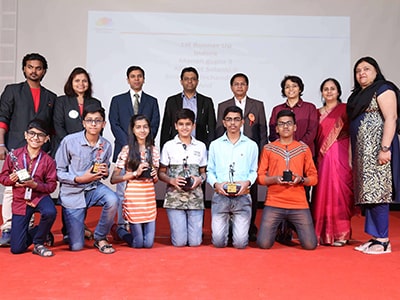Download our FREE Academic Calendar now! 📚 Start your child’s journey to success.
Traditional schools often have the same teaching model. You have a teacher at the centre of the class who controls the discussion while students listen passively to the lecture. It has been described as spoon-feeding, but it’s been effective in ensuring that children remember the information they need to pass their exams and tests.
Montessori schools have changed that as they advocate a different way of teaching. To understand the difference, it is essential to know the five foundational principles that the Montessori Method is built on. These are:
● Respect for the child
● The absorbent mind
● Sensitive periods
● The prepared environment
● Auto-education
If you are thinking about enrolling your child in an international school for Montessori, knowing more about these foundational principles will help you. It will allow you to figure out why a school using a Montessori teaching approach might be the best option for your children.
Respect for the Child
Montessori observed that traditional education did not place a high premium on respecting children. In the classroom, the needs, wants, and interests of the children were always treated second to the instructor’s needs. Montessori’s proposal aimed to change this dynamic. If they want children to learn kindness, if they try to instil that human value in every child in their class, then they should start by switching to a child-centred approach.
That meant that the Montessori Curriculum was all about focusing on what the children need, fostering their independence, encouraging their curiosity, and more.
Because it focuses on respecting the children, Montessori education embraces multiple styles and pathways to learning. The teachers understand that every child learns differently, so they don’t force them to learn at someone else’s pace. They motivate each child, knowing that every learning journey is different.
Another way through which respect for children is shown is through the school’s approach to discipline. In traditional education, some teachers believe in humiliating the children, calling out their behaviour in an ongoing session or lecture. That treatment doesn’t show respect or regard for the child.
In a Montessori school, if a child misbehaves, the teacher will talk to the child after class and find a way to deal with the disruptive behaviour, usually by ignoring it or barely acknowledging what the child is doing. When children receive no response, they usually give up trying to gain anyone’s attention that way. This approach takes into consideration the pride and long-term emotional impact that humiliation could cause a child. By respecting the child as an individual, teachers provide a positive brand of discipline that doesn’t lead to years of emotional scars and damage.
The Absorbent Mind
The first six years of life are crucial to the development and growth of a child. It is the period wherein they try to understand the world and themselves. Montessori schools or those that follow the Montessori approach provide an environment that supports growth through learning experiences. Learning experiences do a lot to encourage a sense of belonging and develop the child’s confidence, independence and agency.
The absorbent mind principle centres around the thought that children are ready and eager to learn. Their minds absorb information with ease. That idea is then factored into the kind of learning environment that the schools provide. Because the teachers at the school believe that learning is always happening, they create experiences with that idea in mind.
Sensitive Periods
Sensitive periods refer to time frames when children have a heightened capacity to learn certain information or skills. The time is different for each child, with children discovering and developing an aptitude for different things. The way teachers in Montessori schools or those who use the Montessori style of teaching determine if the child is undergoing a sensitive period is through observation.
When they determine that to be the case, the instructors figure out the tools to support and accelerate each child’s learning experience. Sensitive periods make it possible for the children to develop skills easily as they are more receptive to learning behaviours during this time. By recognizing the timing, the teachers can maximize that time, providing the children with the resources they need to fulfil their potential and make the most out of the learning experience.
The Prepared Environment
In Montessori schools, classrooms are prepared with the idea that a child must be free to choose learning materials and tools. Through its design, the environment encourages the children to roam around. The learning materials are organized, and there’s more than ample space to use them. Students can go from one area to another, trying to find what interests them, what catches their attention, and teachers are there to facilitate their interactions with the learning materials.
With the right tools, children learn through hands-on learning. Because the environment is optimized for learning, the classrooms are child-friendly. The low shelves and tables, size of the furniture, and space between the areas are enough for the flow of traffic, considering how children move from one area to another. The freedom of movement and freedom of choice means that the children can choose what they want to learn more about, what they want to focus on, and what kind of knowledge they want to build.
Auto Education
This principle believes that children can teach themselves. They are capable of self-education. All the four other principles contribute to this one that children can learn anything with the right support, learning materials, environment, and encouragement.
In a Montessori school, all the previous principles work together to provide the child with everything they need to learn. Children in a prepared environment, who choose what they want to learn about, demonstrate better learning retention. They also have more fun. The fun might not seem to matter, but children who demonstrate more enjoyment in the process associate positive emotions with the learning experience and that builds retention, allowing them to remember those experiences even more.
Now, let us look at the role of the teacher
It is critical to note the role of teachers in this situation. Unlike traditional education that puts teachers at the centre of the classroom, Montessori schools assign the role of facilitator to the teachers instead. That means that the children lead the discussions and the teachers guide them through their educational experiences without taking on the lead. The children are the centre of the discussions and activities.
The activities are all focused on addressing the specific needs of every student. The teachers are there to step in only when students are unable to resolve a situation, when they need help, and when they need to demonstrate more learning activities, allowing the pupils freedom to learn after the demonstration.
Possible Issues
Some parents are uncomfortable with the thought that their children will not be used to testing and being graded, or the lack of competition. However, children raised in Montessori schools perform better when they reach traditional secondary school settings because of their independent learning skills.
If you want to provide your child with an excellent educational experience, look into a Montessori school or one that uses a Montessori teaching style.




































